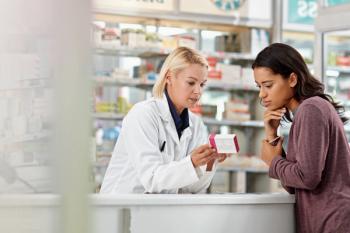
Immune Response, Metabolism Differences May Explain Increased Risk of Alzheimer’s Among Women
Study findings offer critical insight into the development of sex-specific treatment and prevention strategies for Alzheimer’s disease.
New research published in Alzheimer’s and Dementia found that differences in microglial “immunometabolism endophenotypes”, defined by interactions between immune and metabolic reactions in the brain, may contribute to the pathogenesis and disease progression of Alzheimer’s disease (AD) in females.1
Although women comprise a higher proportion of AD cases than men, not much is known about the underlying genetic basis of sex-specific manifestations of AD. To supplement the lack of knowledge on the topic, investigators sought to evaluate the molecular mechanisms that contribute to the sex differences, specifically the female predominance, in the prevalence, symptomology, and pathology of AD.
Investigators performed multimodal integration of clinical (ie, neuropathological diagnosis scores, apolipoprotein E genotypes) and multi-omics data (including metabolomics and bulk and snRNA-seq data) on 469 human subjects from the Religious Order Study and Rush Memory and Aging Project cohort with matched clinical, brain metabolomics, and brain bulk transcriptome data: 324 females aged 88 ± 4 and 145 males aged 87 ± 4, respectively.
Immunometabolism alteration was investigated using 2 multi-omics datasets, including one that integrated bulk brain metabolomics and transcriptomics data to inspect sex differences in metabolite-immune gene association networks, and another that integrated snRNA-seq data to evaluate sex difference in the immune-metabolic pathway activity and metabolic cell-cell communication networks.
The clinical diagnosis of cognitive status at time of death was used to define AD phenotypes, and the Braak staging and Consortium to Establish a Registry for AD score were used to define AD progression.
Investigators observed sex-specific alterations at both whole brain and single-cell levels, including sex-biased differential metabolites (eg, N-acetylglutamate, GPC, 1-stearoyl-2-oleoyl-GPE [18:0 / 18:1]) and associated immune genes (P2RX7, PTPN5, PAK1, TRIM5) in the brain context region. These alterations further included sex differences associated with metabolic and immune pathway activity across 7 cell types, such as elevated CLRs pathway activity and reduced glutamate and glutamine metabolism in microglia, and female-specific glutamate-mediated cell-cell communications in AD, like decreased markers of communications between ex-neurons and microglia enabled by glutamic acid in female subjects.
Other findings included those that observed elevated interleukin (IL)-10 signaling activity by microglia and astrocytes in female AD subjects compared to controls. Investigators noted that since blocking IL-10 anti-inflammatory pathways has been previously shown to improve phagocytic microglia activity and limit cerebral amyloidosis in AD mouse models, considering sex-specific differences in IL-10 anti-inflammatory responses may be helpful when developing future therapeutic strategies for AD.
Study results further revealed that immunometabolism endophenotype heterogeneities exhibited a sex-specific pattern in AD across metabolites, pathways, and cell types. Findings like that that showed a decreased abundance of N-acetylglutamate and N-acetyl-aspartyl-glutamate observed in consistent with 10,000 propensity score matching cohorts in females with AD provide preliminary evidence that N-acetylglutamate may act as a potential sex-specific biomarker for AD.
Based on study findings, investigators concluded that sex-specific differences in immunometabolism regulation play a crucial role in determining biological sex-specific manifestations of AD, particularly as they appear in a microglia-specific manner.
Immunometabolism, a relatively new field of study, holds promise for advancing research into neurodegenerative diseases like AD, especially since it is no longer considered exclusively as a central nervous system disease. Further research on immunometabolism associated with the prevalence of AD could shape the development of therapeutics, clinical trials, and treatment of patients with AD.
“At its core, Alzheimer’s disease is a woman’s health issue. To address it, we must understand how biological sex contributes to the underpinnings of this disease,” said Jessica Caldwell, PhD, director of the Women’s Alzheimer’s Movement Prevention Center at Cleveland Clinic and paper co-author, in a news release.2 “These findings confirm that we need to look at sex differences in the way the body and brain systems communicate to be able to truly offer women personalized care and we look forward to continuing this research.”
References
1. Hou Y, Caldwell JZK, Lathia JD, et al. Microglial immunometabolism endophenotypes contribute to sex difference in Alzheimer's disease. Alzheimer's Dement. 2023; 1-16. https://doi.org/10.1002/alz.13546
2. Cleveland Clinic research finds sex differences in immune response and metabolism drive Alzheimer’s Disease. News release. EurekAlert. November 21, 2023. Accessed November 27, 2023. https://www.eurekalert.org/news-releases/1008792
Newsletter
Pharmacy practice is always changing. Stay ahead of the curve with the Drug Topics newsletter and get the latest drug information, industry trends, and patient care tips.















































































































